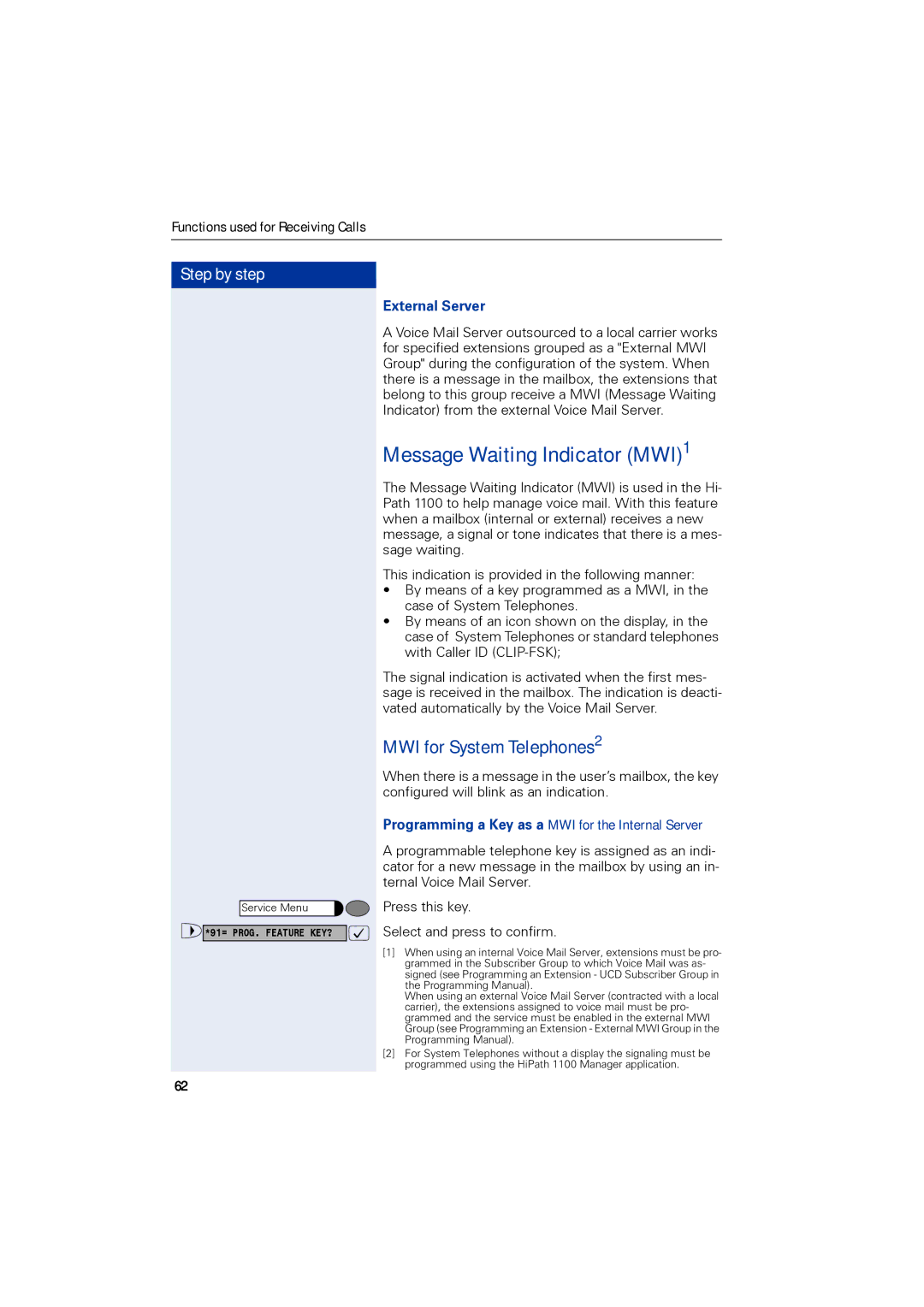
Functions used for Receiving Calls
Step by step |
Service Menu |
>*91= PROG. FEATURE KEY? : |
62 |
External Server
A Voice Mail Server outsourced to a local carrier works for specified extensions grouped as a "External MWI Group" during the configuration of the system. When there is a message in the mailbox, the extensions that belong to this group receive a MWI (Message Waiting Indicator) from the external Voice Mail Server.
Message Waiting Indicator (MWI)1
The Message Waiting Indicator (MWI) is used in the Hi- Path 1100 to help manage voice mail. With this feature when a mailbox (internal or external) receives a new message, a signal or tone indicates that there is a mes- sage waiting.
This indication is provided in the following manner:
•By means of a key programmed as a MWI, in the case of System Telephones.
•By means of an icon shown on the display, in the case of System Telephones or standard telephones with Caller ID
The signal indication is activated when the first mes- sage is received in the mailbox. The indication is deacti- vated automatically by the Voice Mail Server.
MWI for System Telephones2
When there is a message in the user’s mailbox, the key configured will blink as an indication.
Programming a Key as a MWI for the Internal Server
A programmable telephone key is assigned as an indi- cator for a new message in the mailbox by using an in- ternal Voice Mail Server.
Press this key.
Select and press to confirm.
[1]When using an internal Voice Mail Server, extensions must be pro- grammed in the Subscriber Group to which Voice Mail was as- signed (see Programming an Extension - UCD Subscriber Group in the Programming Manual).
When using an external Voice Mail Server (contracted with a local carrier), the extensions assigned to voice mail must be pro- grammed and the service must be enabled in the external MWI Group (see Programming an Extension - External MWI Group in the Programming Manual).
[2]For System Telephones without a display the signaling must be programmed using the HiPath 1100 Manager application.
